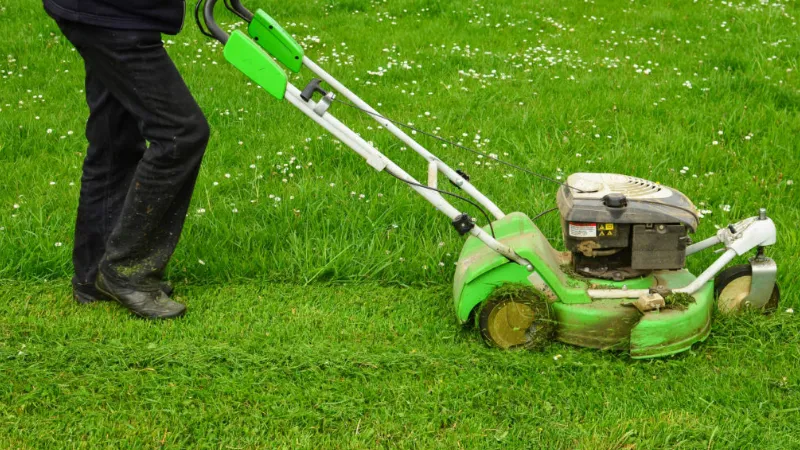In this article, I’ll share my watering advice for snake plants so that they can live long, healthy lives. To begin with, how to water snake plants?
When it’s warm outside, snake plants need watering every two to four weeks; when it’s cold outside, they need it less frequently.
Continue reading.
How to Water Snake Plants?
Growing snake plants is very simple, and there aren’t many potential problems. Watering is the sole exception in this case. The most typical cause of issues for Sansevieria owners is improper watering practices.
When you are watering your snake plant, you must be cautious. It is essential to water the soil only, avoiding the leaves. The leaves shouldn’t be exposed to any water because it could rot them. This is a problem for many houseplants but it is particularly crucial to remember for snake plant because it has plenty of leaves.
The watering schedule is another consideration. While you should give your snake plant enough water, you should never overwater it. The leaves may become mushy and yellow at the base from over-watering. This is a common sign of over-watering. If you see this happening, it’s critical to reduce watering to protect your plant from further issues.
Always wait until the top inch of soil is dry before giving your plant another watering to ensure that you are watering it correctly. The main guideline to follow during the growing season is this. Wintertime watering needs to change. You should only water your plant during the winter to keep the soil from drying out completely. Always make sure not to over-water your plant because it may cause its roots to rot.

Water Needs Depend on Growing Conditions
While snake plants are generally drought-tolerant plants, the amount of water that each individual plant needs will vary depending on its growing conditions. The amount of water a snake plant needs depends on a variety of factors, including light, temperature, humidity, soil type, and the kind of pot it is planted in.
Light
The amount of light a snake plant gets is the most important factor influencing how often it will need to be watered. Snake plants can grow in a range of lighting conditions, from bright light to low light, but their watering needs will need to be altered depending on the amount of light they are receiving. More frequent watering will be required for plants grown in high light, whereas less frequent watering will be required for plants grown in low light. As a result, if you have more than one snake plant growing in different parts of your house, you might need to water it more frequently than the others. This is totally normal!
Temperature and Humidity
Although growers should be aware of the effects that various temperatures and humidity levels will have on their plants’ watering requirements, snake plants thrive in a wide range of temperature and humidity conditions. In general, a plant grown in a warmer environment will need more water than one grown in a colder environment, and a plant grown in an environment with high humidity will need less water than one grown in arid conditions. This means that a snake plant growing in hot, dry conditions will require significantly more water than a plant growing in cold, humid conditions, and vice versa.
Soil Type
Ideally, snake plants should be planted in sandy, well-draining soil. After each watering, this aids in keeping extra moisture away from the roots. They won’t require as much watering, though, if they are planted in less well-draining soil, compared to when they are.
Potting Container
Believe it or not, even the type of pot that a snake plant grows in can affect how often it needs to be watered. For example, terracotta pots absorb moisture from the soil which dries out the soil faster than a plastic pot. Similarly, if the pot has drainage holes (which it should always have!) excess water will drain from the drainage holes during each watering resulting in drier soil whereas pots without drainage holes will hold that excess water in the soil for longer. Make sure you understand the type of pot your snake plant is in and how that may impact its growing circumstances!

How Often to Water Snake Plants?
Every two to four weeks during the warm months, and less frequently during the colder ones, snake plants need to be watered.
Make sure the top layer of soil is dry with your finger before watering your sansevieria.
If the soil feels dry after inserting your finger about an inch (2.5 cm) into it, it’s time to water.
If the soil is still moist, leave it another week before watering.
You can also use a soil moisture meter to tell you when the soil has dried out enough to water again.
When to Water Snake Plants?
As a general rule, snake plants need to have their soil watered after it has completely dried out. You can anticipate watering your snake plant more frequently in the spring and summer than you would in the fall and winter due to increased light, warmer temperatures, and more active growth. For example, you may need to water your snake plant once a week during the spring and summer and only once every two to three weeks during the fall and winter. If you are unsure whether to water your plant, keep in mind that it is typically preferable to underwater a snake plant than to overwater it. To test the soil and make sure it is completely dry before watering, you can also buy a moisture meter.
Top watering tips:

Overwatering of Snake Plants
Because snake plants prefer dry environments, they struggle in soil that has been saturated with water.
The plants will rot if they are consistently overwatered.
You’re watering them excessively if the leaves are beginning to fall over.
Signs That Your Snake Plant is Underwatered
Similar to overwatering, underwatering the snake plant can quickly lead to plant death if not corrected. Although snake plants are renowned for not requiring much water, they will suffer if exposed to direct sunlight or left dry for an extended period of time. Here are the signs to look for to tell if your snake plant may be underwatered, pay close attention to the plant’s tall leaves:
- Wrinkled leaves;
- Leaves have brown tips;
- Leaves begin to turn brown and crunchy;
- Leaves fall off;
- Leaves curl up.
How Long Can Snake Plants Live Without Water?
Sansevierias can store water in their leaves, roots, and rhizomes like other succulents, so they don’t require as much watering.
Snake plants can go without water for about two to three weeks in the summer and for six to eight weeks in the cooler months.
If you’re going on a long vacation be sure to give your snake plants a deep watering before you leave.
Can Snake Plants Be Watered With Tap Water?
Given that snake plants and other house plants are delicate to the chlorine that is added to tap water, it is ideal to use filtered water or rainwater for them.
If you can only get tap water, let it stand for the entire night to let the chemicals diffuse.

FAQs
How Do Snake Plants Like to Be Watered?
Water only when the soil is nearly dry. Overwatering will kill a snake plant in the shortest amount of time. Check the soil with your finger before you decide to water. You can still safely wait a day or two before watering if the soil feels dry to the touch.
Should Snake Plants Be Watered from the Top Or the Bottom?
Snake plants can be watered from the bottom every few weeks to give them a deep watering. Placing your snake plants in a shallow container or bathtub with about an inch (2.5 cm) of water in it will allow you to bottom water them.
Can You Put a Whole Snake Plant in Water?
Yes, Snake Plants can be grown in water alone! Naturally, as long as you maintain clean water and put them in an area where they receive the right amount of sunlight.
How Long Can Snake Plant Go Without Water?
Sansevierias, also referred to as snake plants or mother-in-law’s tongues, are quite the opposite of some plants, which are relatively high-maintenance and bordering on dramatic (cough, cough: the fiddle-leaf fig). In fact, these trusty greens are so resilient they can go up to two weeks without water.
Summary: How to Water Snake Plants?
The fantastic indoor plant known as the snake plant is very easy to grow. It requires little maintenance and can grow in a variety of soils, light intensities, and growing conditions. While it prefers dry air and soil it doesn’t have many other requirements you need to fulfill to make it strong and healthy.
If you have any questions, please leave a comment. My Prime Home tries to give you the best home improvement information. Thank you for reading.
Read about



